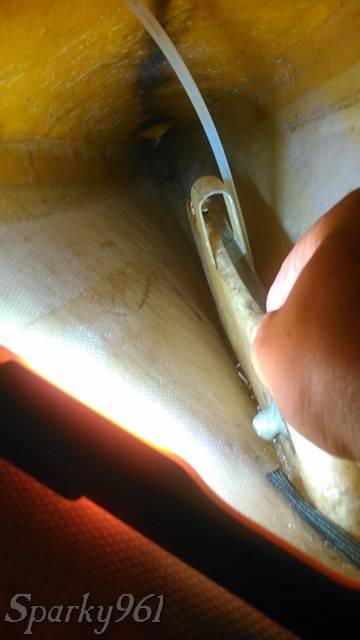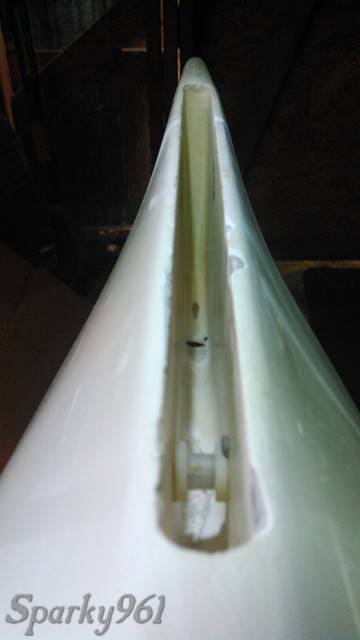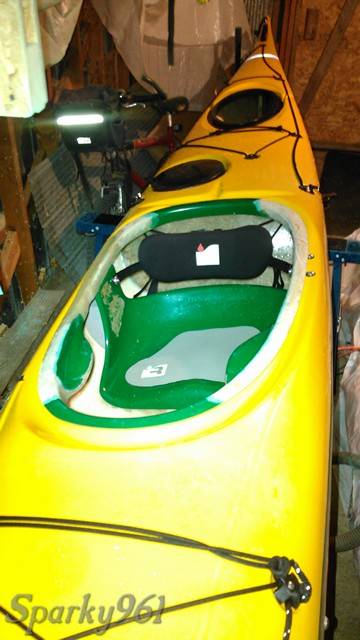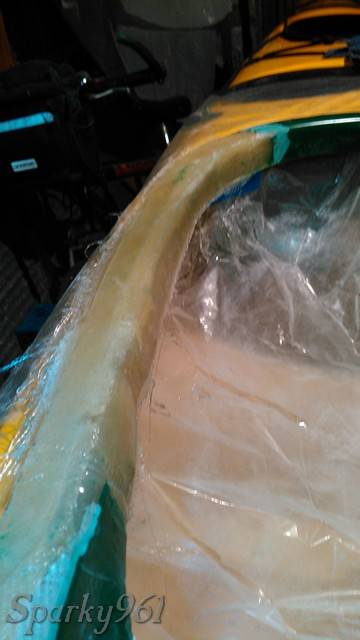I started on my repairs today. The hardest part, and the part that matters the most is the exploration and preparation. The exploration involves chipping, poking, prodding, and removing things that most sane people would cringe at. I consider myself relatively sane, and I was definitely cringing at some points. However, anyone who thinks they can just slap a patch over things without removing every bit of damage down to good material is just wasting their time.
I’ll update this thread as things progress. Note that I’ve done plenty of repairs and built many things in my life, but this will be my first time using fiberglass and gelcoat for anything serious. Any qualified input or suggestions will be both appreciated and considered with regard to my overall repair plan.
I have two goals with this project. The first and most important is to structurally repair the damage to my skeg box and restore it’s watertightness. The second, while the boat is dry and being worked on, is to repair a couple of serious chips and cracks to the gel coat. Some of these are cosmetic, while others could cause problems if left alone.
[Edit: You’ll see later in this thread that the cracks have become a larger part of the project. I’ve ended up stripping the gel coat from most of the coaming, building up the edge with epoxy and fiberglass, then re-applying gel coat.]
To start things off, I decided to get rid of the fiberglass hoop that I can only figure is there to protect the skeg cable from damage. Little good it’s done. Well, maybe. I’ve discovered that the damage to the skeg box area was more extensive than could be seen (no surprise there). It also looks like it’s been there for a long time without leaking fully. So maybe I knocked it on one of my recent trips, but the hoop still has to go, at least temporarily to give me room to work. A hacksaw blade did the job quickly. I also secured the skeg cable tube out of the way for future work.
After looking at it a bit more, I discovered the hoop wasn’t attached with more than one or two layers of glass, so proceeded to cut and chip the remaining uprights from the hoop from either side of the skeg box. This is where most of the cringing took place, with lots of ripping, cracking, and snapping noises. I did it carefully though, and most of the loosely attached stuff came off without damaging the box itself.
Then I turned the boat over and started chipping out the loose gelcoat. I was a bit surprised when I started doing this that there was an air gap behind the gel coat, not fiberglass! But, it must be done so I continued chipping, scraping and sanding until I found good material. Not at all easy to do “down hole”, using long instruments. I’m sure a proctologist has a more difficult time, but not by much.  I went from seeing two small hairline cracks, to the following…
I went from seeing two small hairline cracks, to the following…


While I had the boat upside down I sanded and feathered a few of the large chips missing from the corner of the skeg box, preparing them for filling with gelcoat later.
Shining a light from below and looking inside the boat reveals the location of the damaged areas to be repaired.
And moving the light back inside, this is how I’m leaving things for today. The remains of the hoop have been sanded down smooth, and both the inside and outside are prepared for glassing and gel coat. I tried to remove the bolt that retains the skeg pivot, but it must have been installed before the skeg box was attached to the boat because it interferes with the hull before it can be fully pulled out, even at an angle. I could cut it out, but I’m not sure what I’d do to resecure it when done, so I’ll work around it as best I can.
A few questions for those of you who have undertaken similar (or more involved) fiberglass projects:
-
How many layers of 4oz weave should I consider putting on the inside? How far beyond the damage, and in what shape? I have some chopped mat I could use as well, but my understanding is that it isn’t very strong.
-
On the bottom, inside the skeg box, most of the existing glass under the gelcoat was little more than greyish-brown powder and was removed. Should I consider adding a small glass patch in these areas, or just rely on the inside reinforcement and gelcoat over this inside the skeg box?
-
I was thinking of building up area where the skeg cable goes through. The idea being to create a flat area inside, or building up the top of the skeg box to accept a longer flat stainless steel reinforcing plate, sealed by a gasket between it and the hull. Am I overdoing it, or is there a better design you’ve seen that I can incorporate into the repair? Alternatively I could make a plastic piece that’s concave conforming to the top of the skeg box, and flat on top for the skeg fitting. There just has to be something better than the original design, which completely sucks.


































